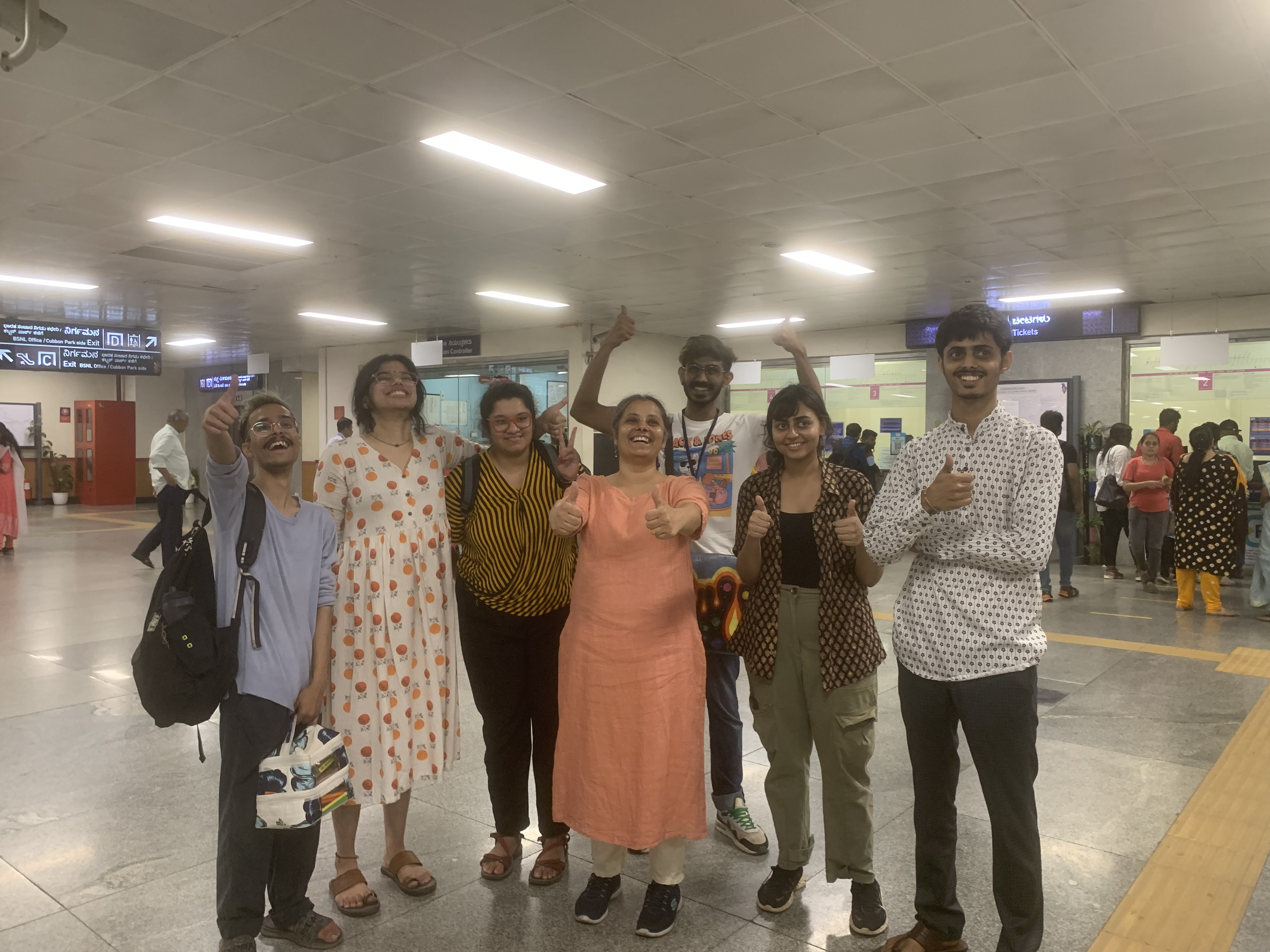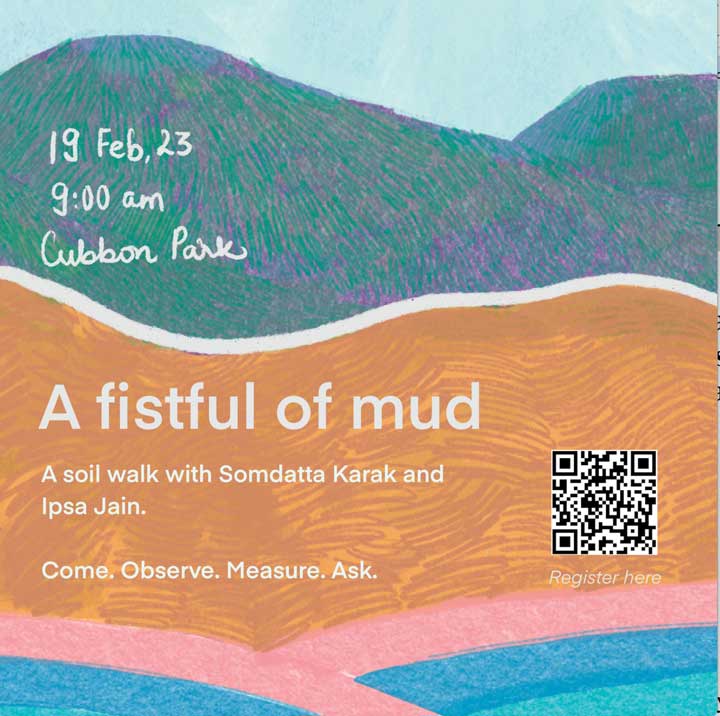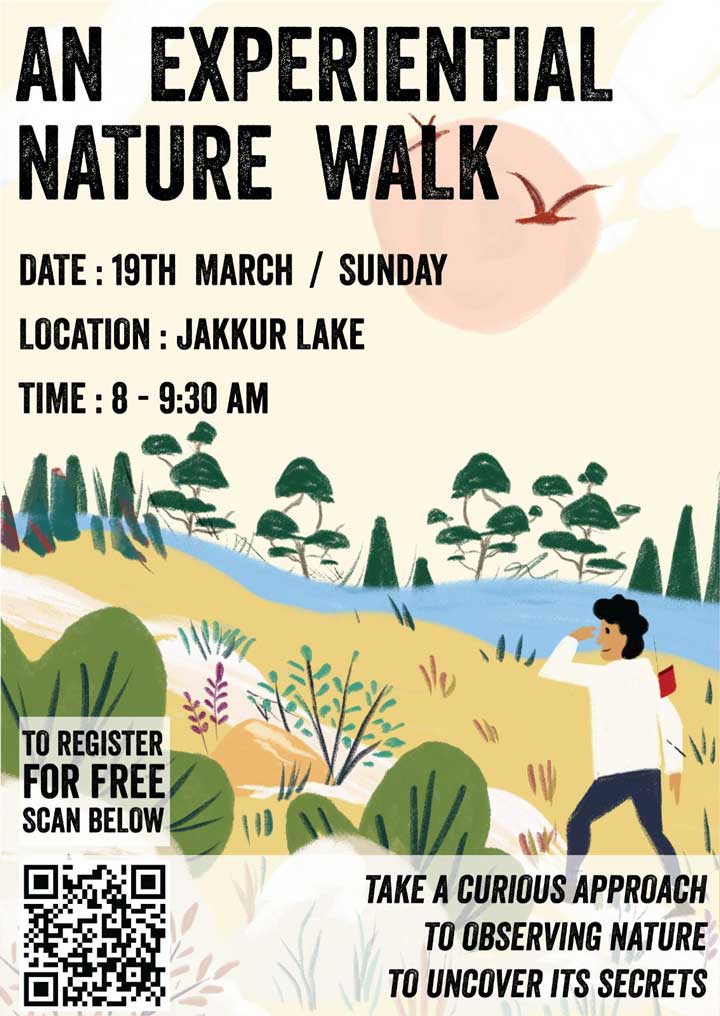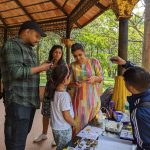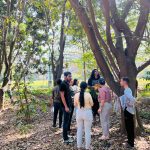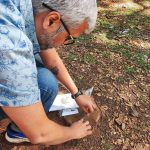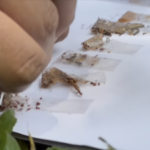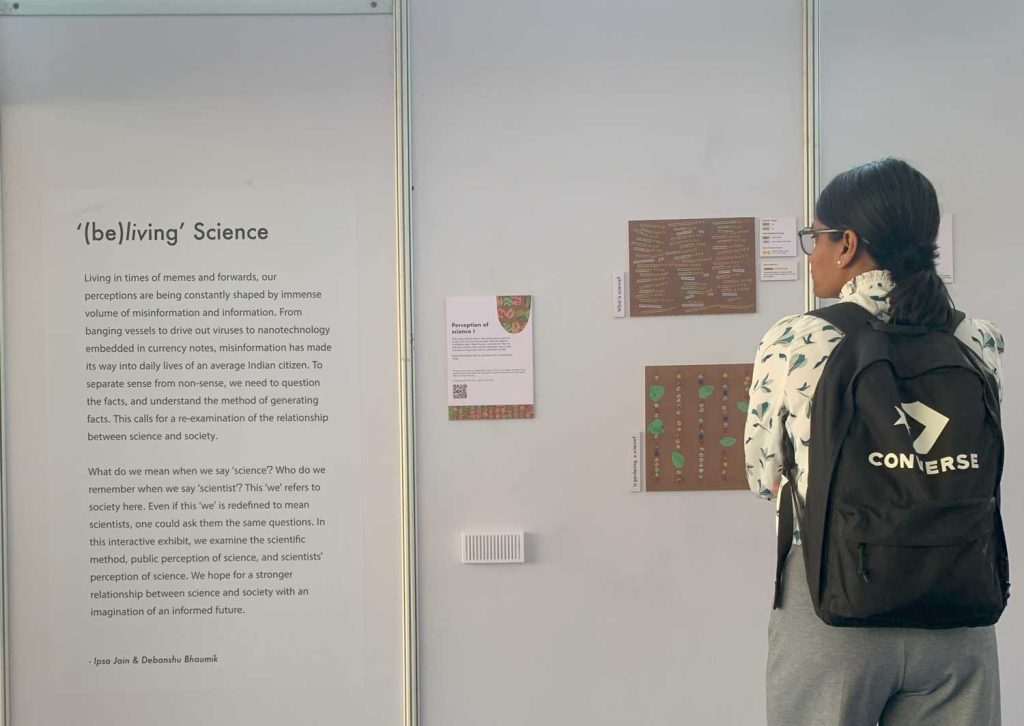Public engagement
Why do we not talk about science in public spaces? What is science only institutional? Is there something we (the science communicators) do to reduce barriers to access to science? One of the strategies is to directly engage with the public in dialogue, discussion, and ‘doing’ science.
Fistful of mud
Mud is ubiquitous. It is part of our houses, in our gardens, and on balconies and terraces. It is amenable to observation, collection, and play. Do you want to taste it? Do you want to see its color? Do you want to know if it mixes with water? Is a fistful of mud a solid or liquid? What happens if you sieve mud with different sizes of gauze? What would happen if you filled a bottle with sand and let it drip from a small pore? Would the rate of fall of mud be the same in Bangalore and on the Puri coast? What brings odor to mud? What kind of growth can happen on soil? How does soil differ from the dust that collects in the house?
Can mud tether scientific curiosity and inquiry across the public? Can frugal resources and imaginative solutions allow for consistent observation, measurement, and comparison? Can the public be empowered to ask and answer their scientific questions?
The ideation for this project was done with Dr. Somdatta Karak and Dr. Sashi Thutupalli.
The first step in scientific pursuit is the questioning (usually). In a project that I ran at Srishti School of Art, Design and Technology with design students, we imagined how science can be brought closer to society. Can non-scientists work to build and foster their curiosities? Can we observe, play, converse, and ask ‘good’ scientific questions in public places?
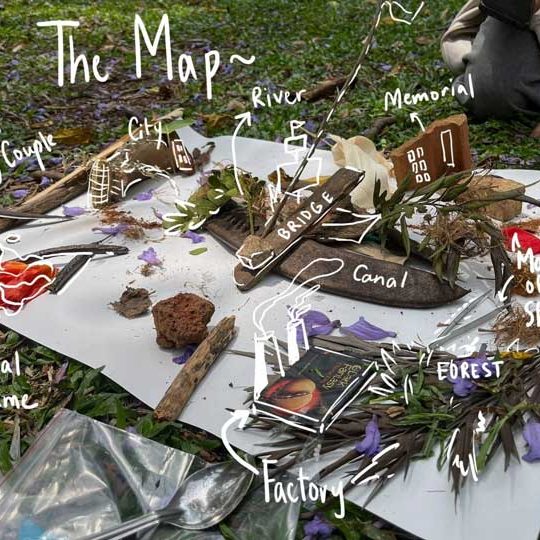

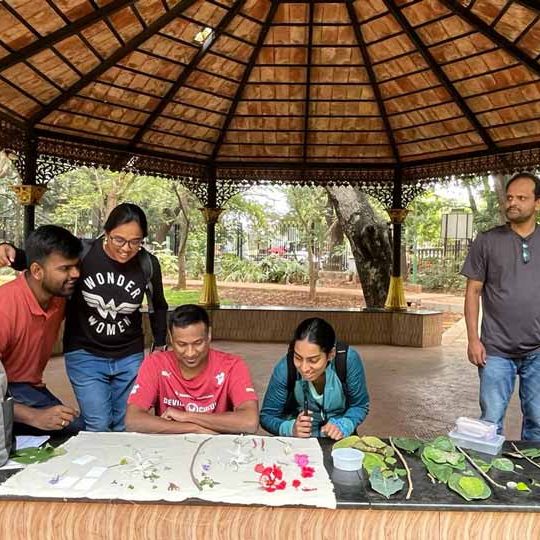
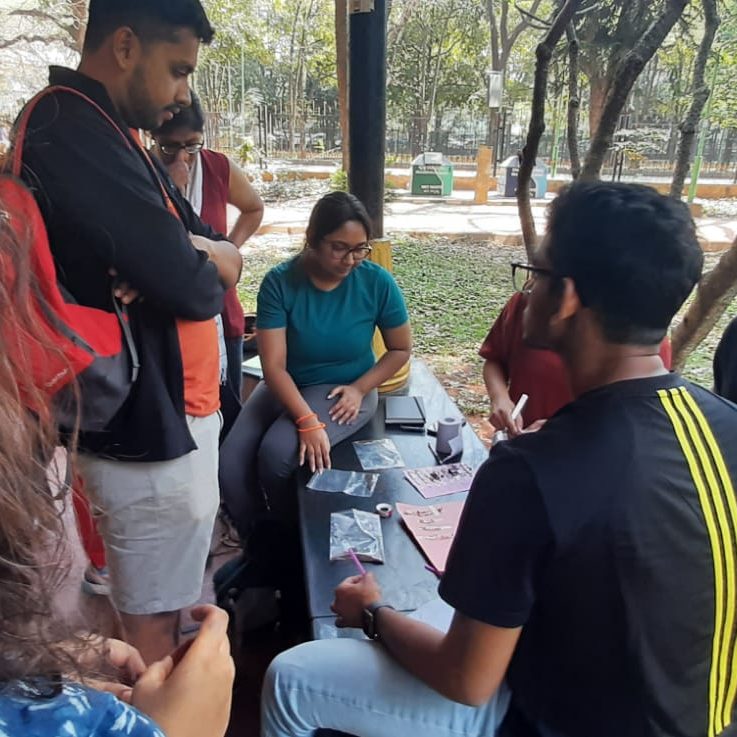
During the project, the students engaged with scientists, and science institutions as well as with the public. We organized several nature walks, and engagement activities in public spaces like lakes, parks, and metro stations. Our work also made it to the media.
The project exposed the students to observation, measurement, and experimentation besides planning and execution of public engagements. Through the pursuit of their interests, some of them generated tools that can be used by teachers, students, the public, and anyone interested in science.
Low-cost, downloadable versions are available on the link. You can also write to me directly for a package of the files.
As one of the highlights of this project, we conducted several nature walks and nature observation-related public outreach activities. What was unique about these events was they were organized by interested, enthusiastic non-science-trained students for the public at large.
We hope to create a bank of answerable or good questions that have come from the community we created. We hope to create a space and platform for the community to interact and communicate, and perhaps even collaborate.
We presented a part of the work as exhibits and posters at the Curiosity Conference at IIT Gandhinagar, 2023.

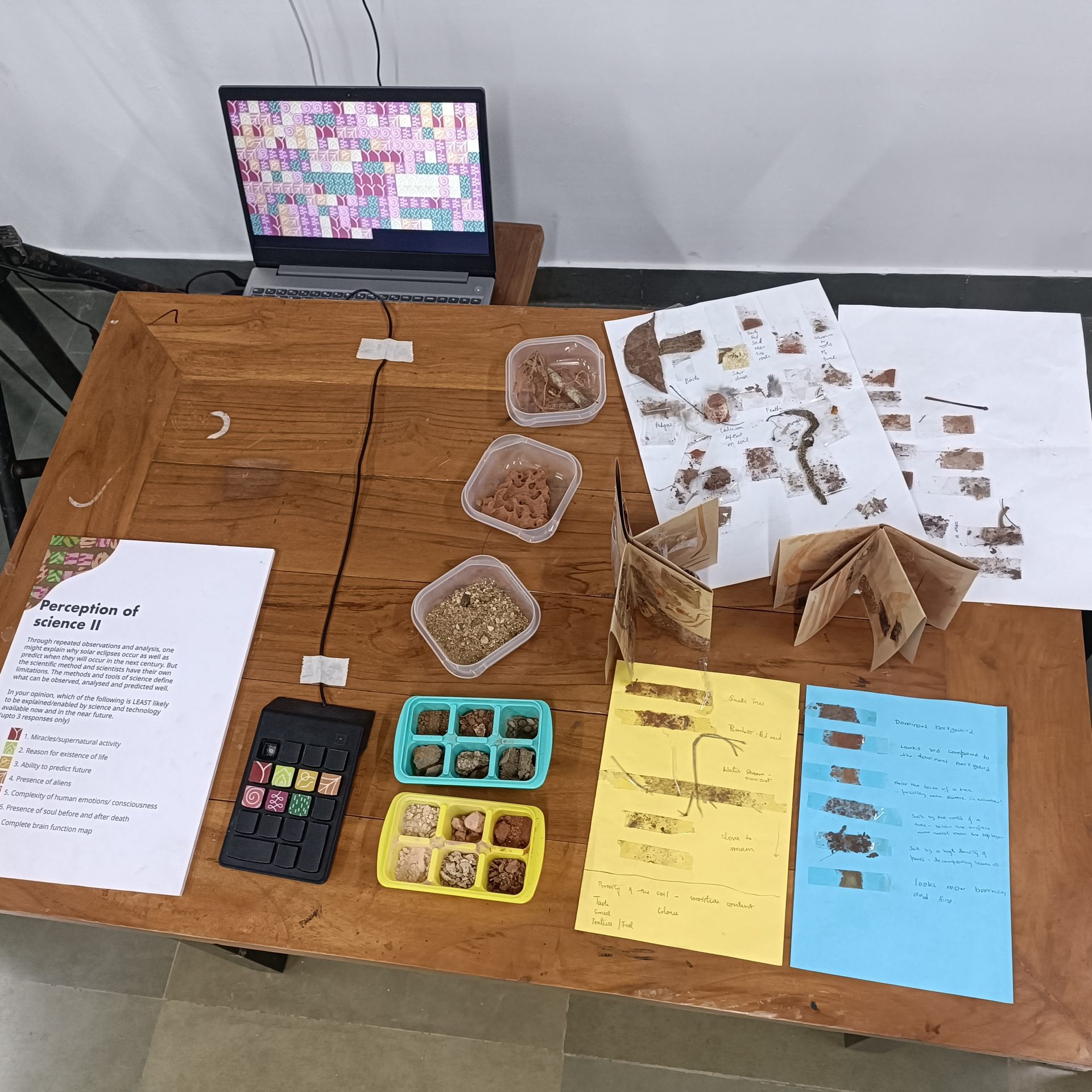
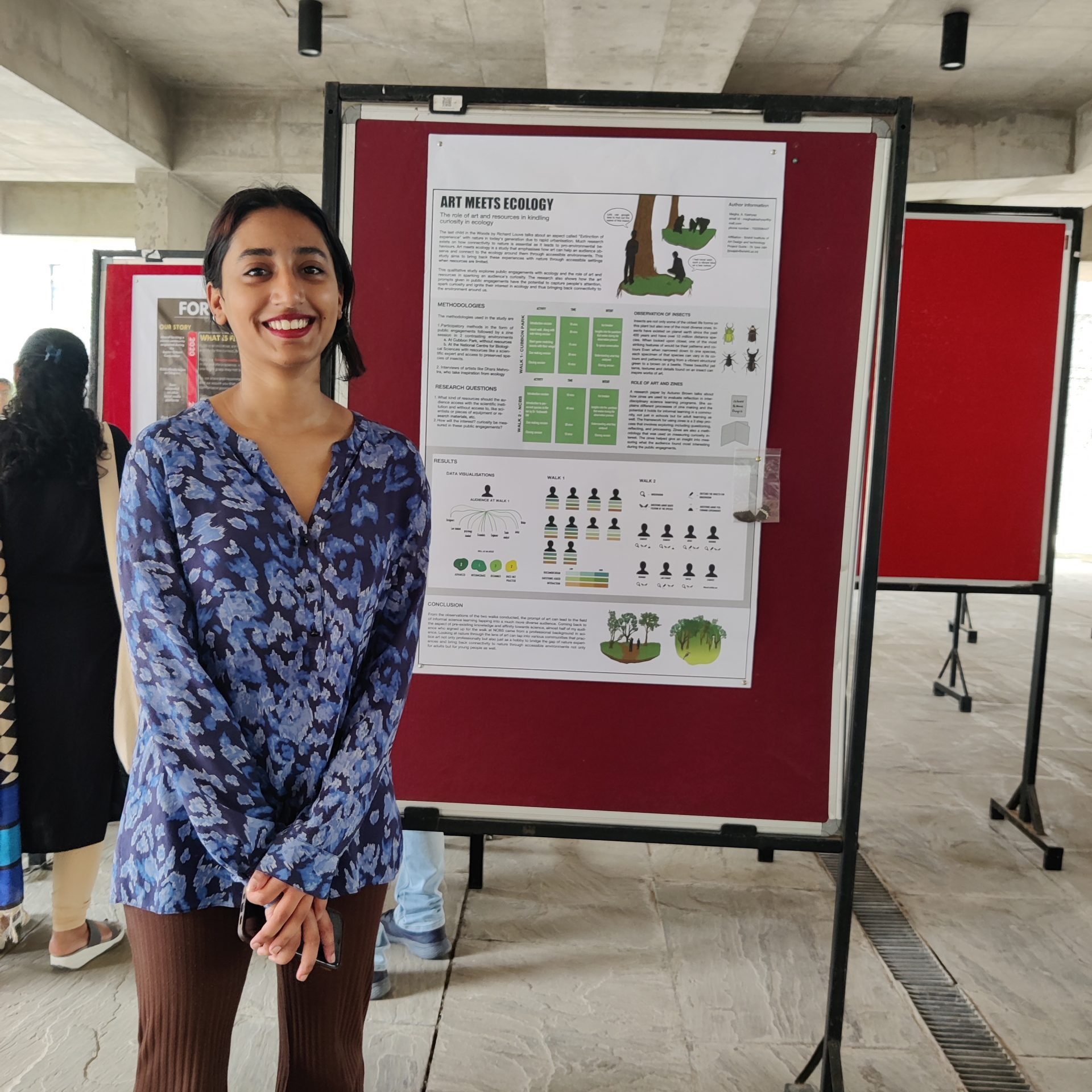
ScienceHigh
I ran a series of public science talks that were delivered by young science students and researchers at a local bookstore. People were welcome to walk in and listen in, ask, and engage with some demos and exercises as well. We got Drosophila, Hydra, tessellation patterns, Chlamydomonas, and a whole lot of things for people to play with.
Media mentions here and here
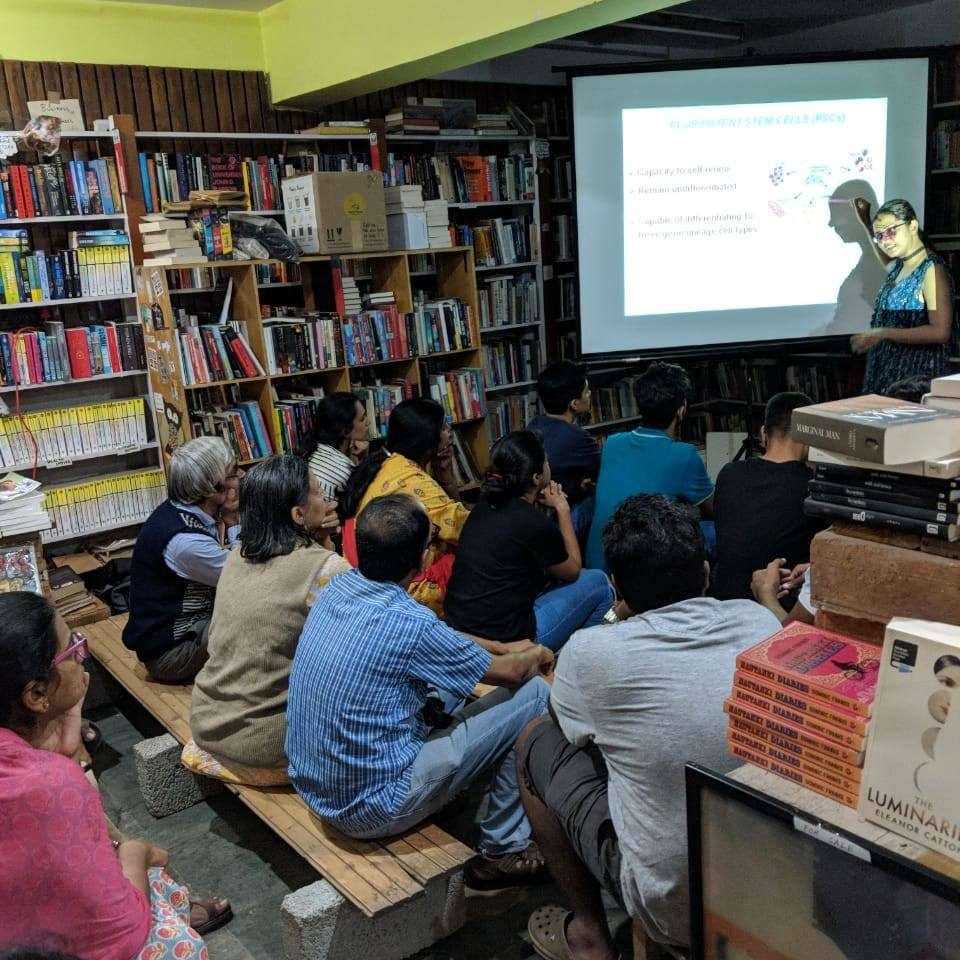
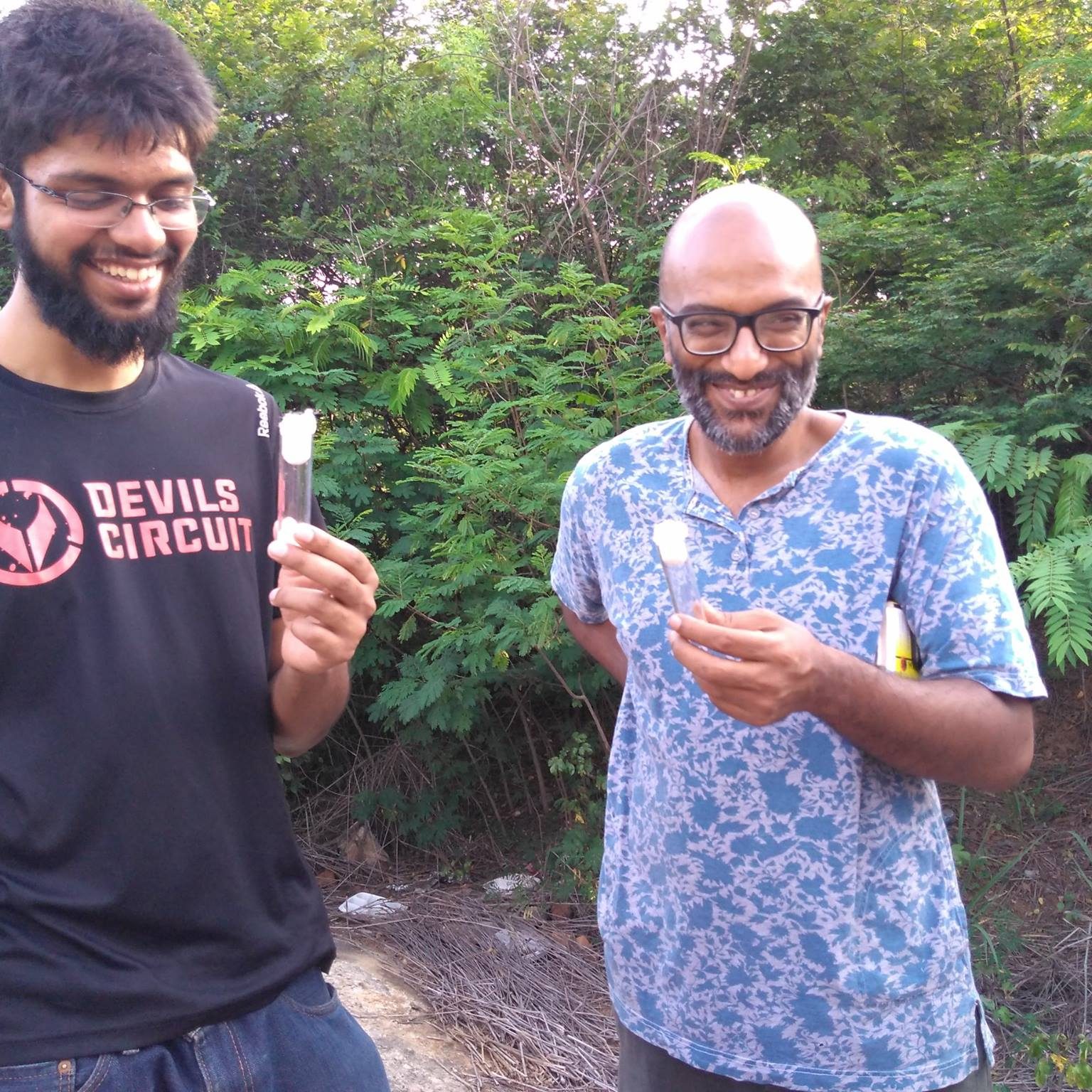
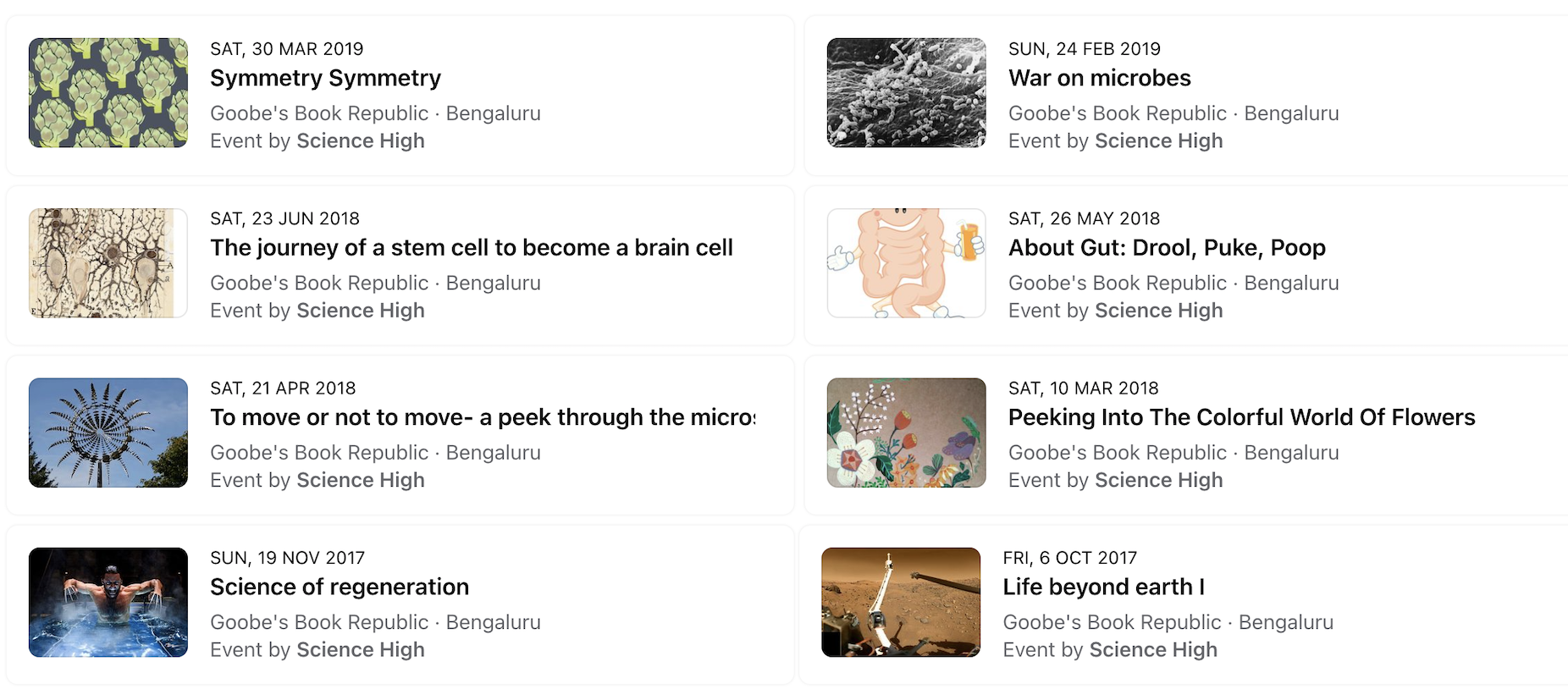
Testimonials
Vivamus magna justo, lacinia eget consectetur sed, convallis at tellus. Praesent sapien massa, convallis a pellentesque nec, egestas non nisi. Curabitur aliquet quam id dui posuere blandit Cras ultricies ligula sed magna dictum porta.
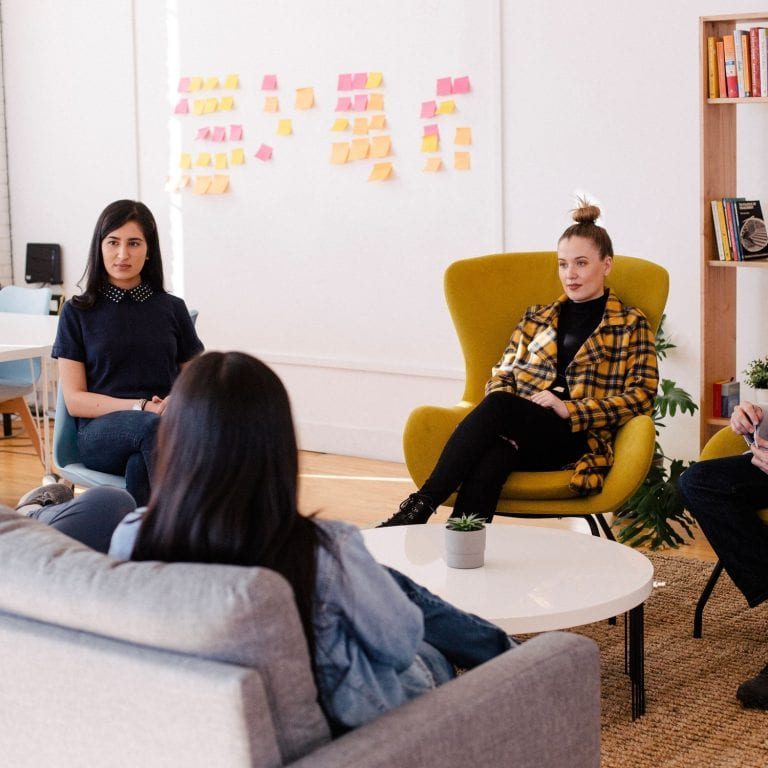
Vivamus magna
Lacinia eget
Vivamus magna justo, lacinia eget consectetur sed, convallis at tellus. Praesent sapien massa, convallis a pellentesque nec, egestas non nisi. Curabitur aliquet quam id dui posuere blandit Cras ultricies ligula sed magna dictum porta.
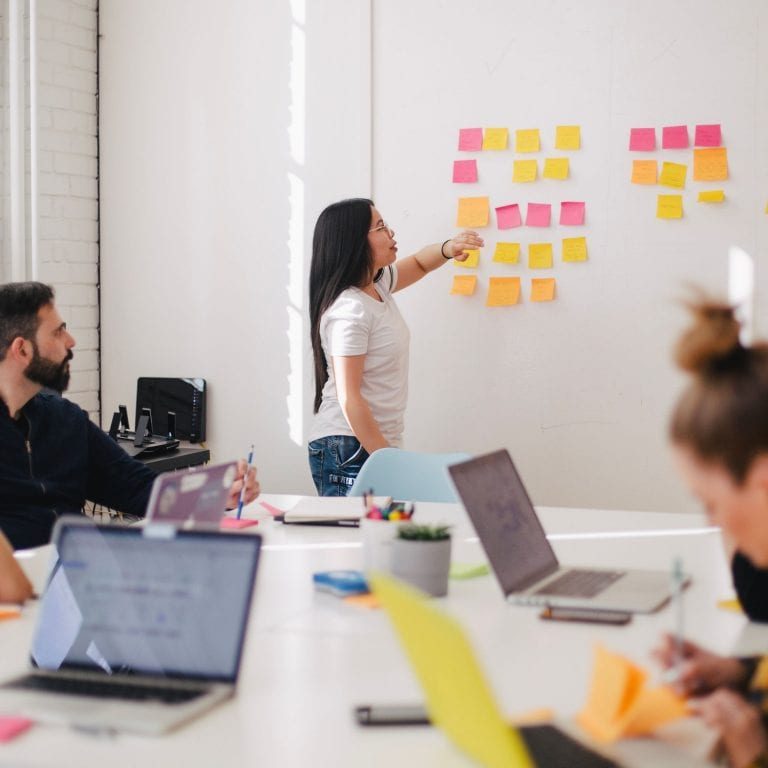
Vivamus magna
Lacinia eget

